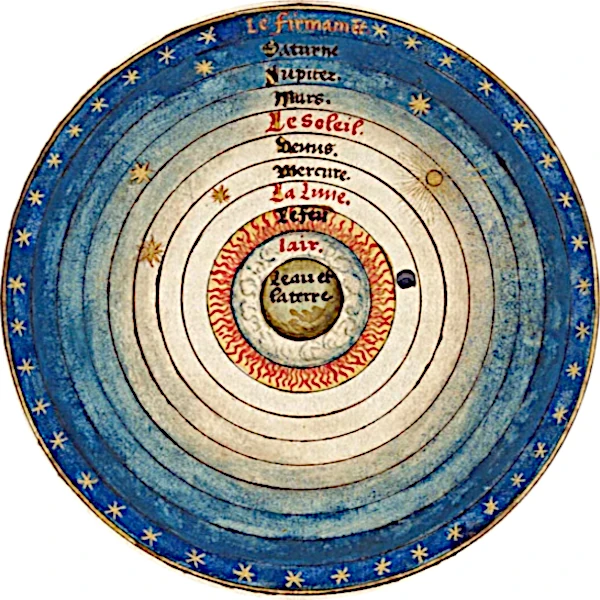
Since the dawn of human thought, the question of the nature of the Universe has fascinated philosophers, theologians, and scientists. From the first geocentric models to contemporary theories of the multiverse, our understanding of the cosmos has continually evolved, reflecting both the technological limits of each era and the intellectual audacity of those who dare to contemplate the inconceivable.
The notion of the universe has profoundly evolved over the centuries, moving from mythical cosmogonies to cosmological models based on observations and theoretical physics. Long centered on the Earth or the solar system, the universe has gradually been perceived as an infinite, homogeneous, and expanding space. This conceptual progression illustrates the human capacity to transcend the immediate appearance of the world to discover its deep structure.
Each era has added a new layer of complexity to the definition of the universe. From the sphere of fixed stars to the quantum multiverse, models of the universe today integrate observational data of extreme precision (CMB, redshift, gravitational lenses), and advanced mathematical concepts such as general relativity or non-trivial topology.
| Period | Model of the Universe | Characteristics | Author(s)/Culture |
|---|---|---|---|
| ~3000 BC | Mythical Cosmos | Closed universe, often supported by deities or pillars | Sumer, Egypt, Vedic India |
| 4th century BC | Geocentric Universe | Immobile Earth at the center of celestial spheres | Aristotle, Ptolemy |
| 1543 | Heliocentrism | Earth orbiting around the Sun | Copernicus, Galileo, Kepler |
| 18th century | Infinite Mechanistic Universe | Universal laws, Newtonian gravity | Newton, Laplace |
| 1917 | Relativistic Static Universe | Curvature of space, cosmological constant | Einstein |
| 1929 | Expanding Universe | Redshift of distant galaxies | Hubble |
| 1965 | Big Bang | Cosmic microwave background, primordial nucleosynthesis | Penzias, Wilson, Gamow |
| 2000 - today | Multiverse / Inflationary Universe | Quantum fluctuations, dark energy, inflation | Guth, Linde, Tegmark |
Sources: Nature (2020), NASA/Hubble, Stanford Encyclopedia of Philosophy - Cosmology.
Modern cosmology is based on three major conceptual pillars: the cosmological principle (the universe is homogeneous and isotropic on a large scale), Einstein's general relativity, and the Big Bang model confirmed by the cosmic microwave background. These foundations have made it possible to reconstruct the history of the universe over nearly 13.8 billion years, from the primordial plasma state to the formation of large cosmic structures.
Today, cosmology studies not only the structure of the observable universe but also its beginnings, its global geometry, its quantum fluctuations, and even the possibility of multiple universes. Each theoretical or observational breakthrough, such as the detection of gravitational waves or the mapping of the cosmic microwave background, transforms our relationship with the universe. Far from being complete, the notion of the universe remains open, dynamic, and subject to conceptual bifurcation.